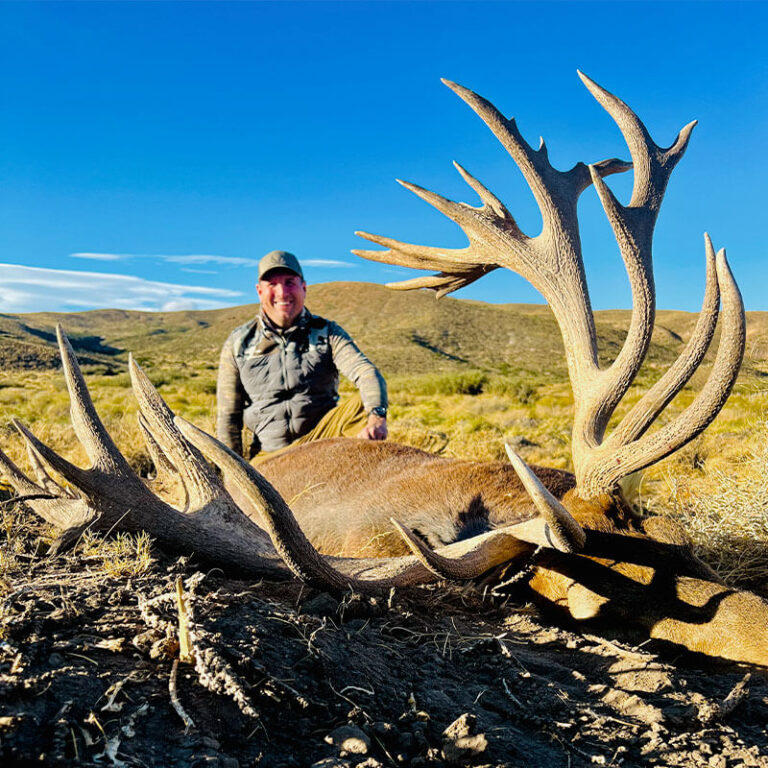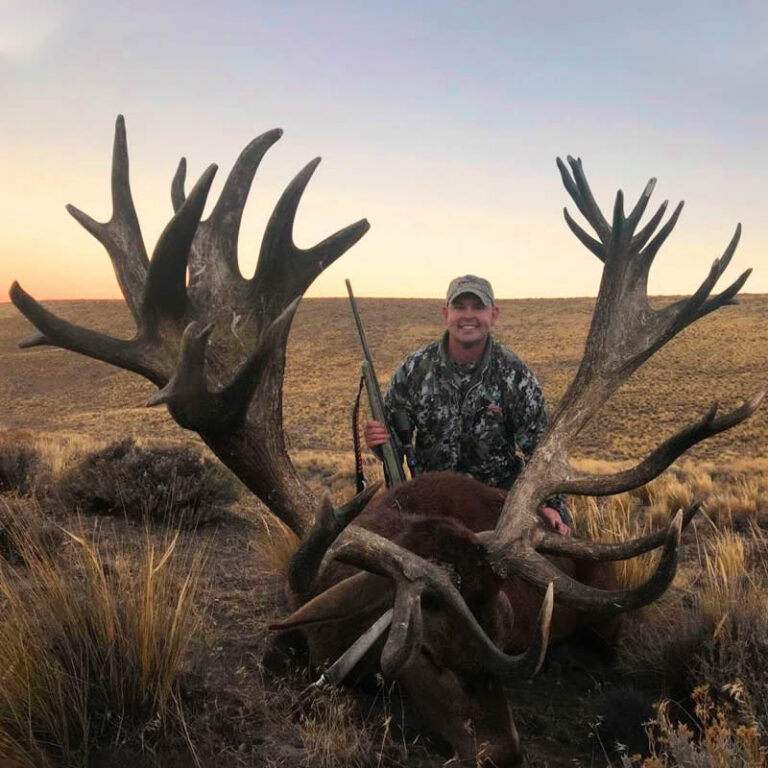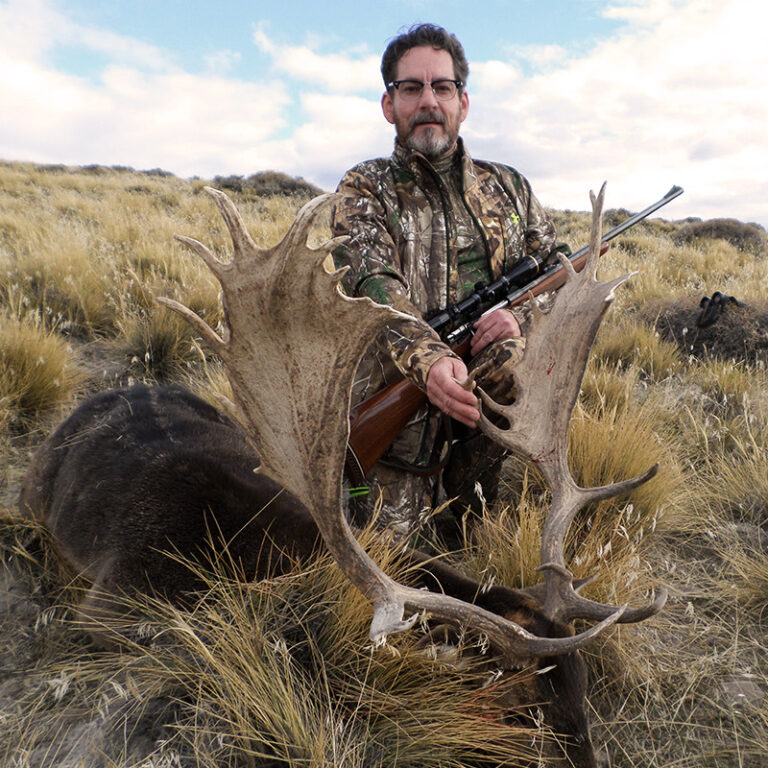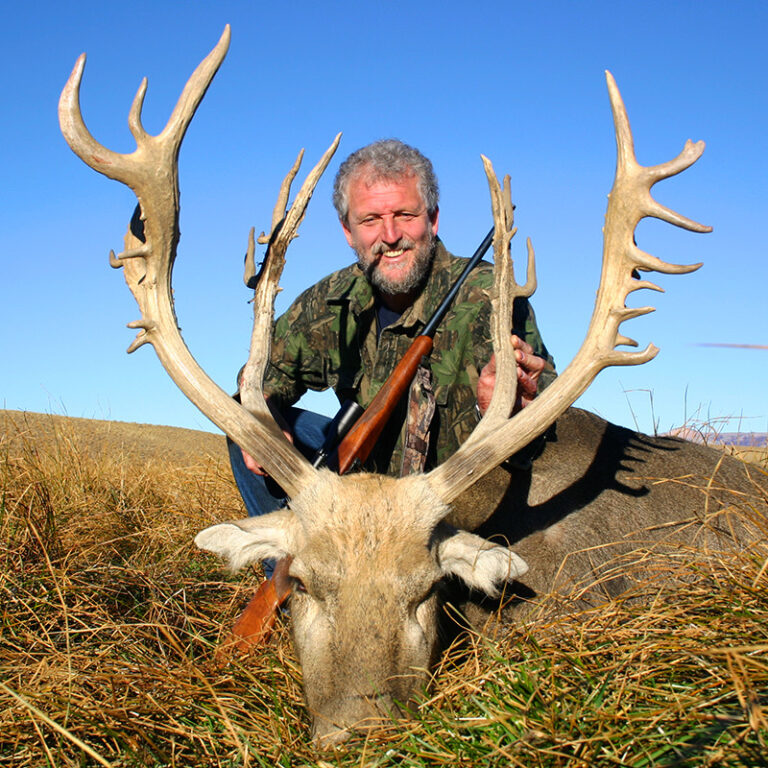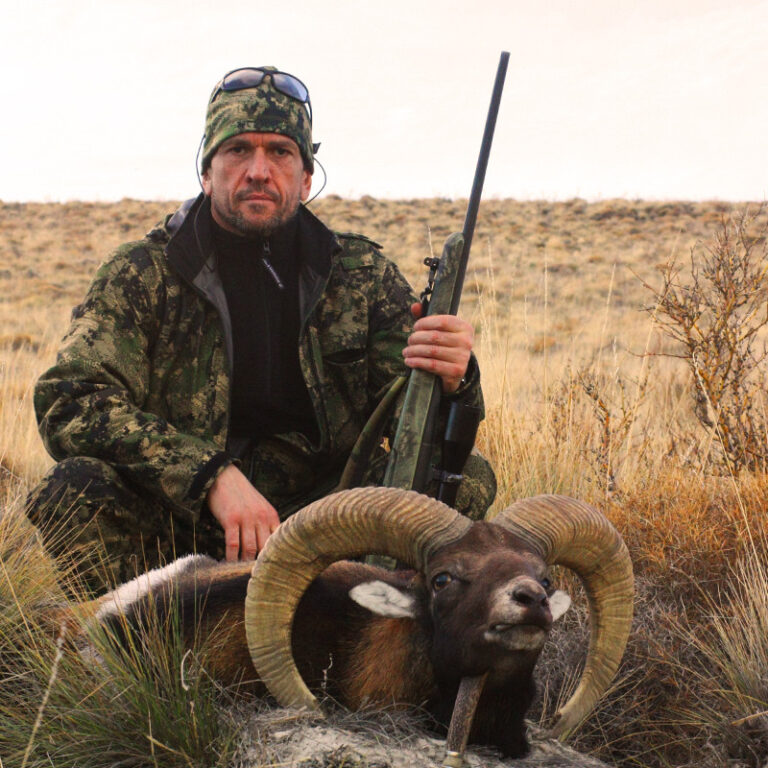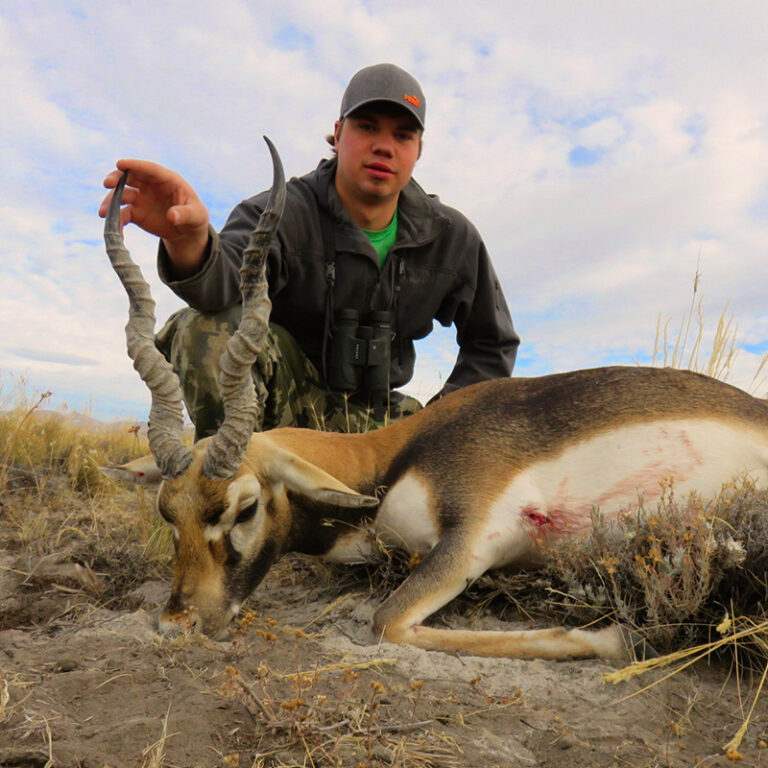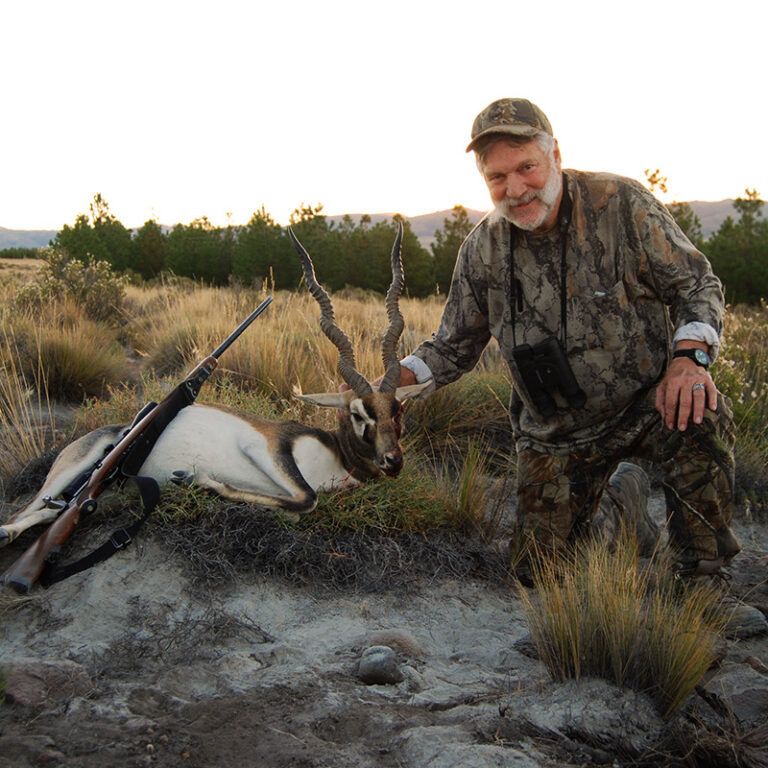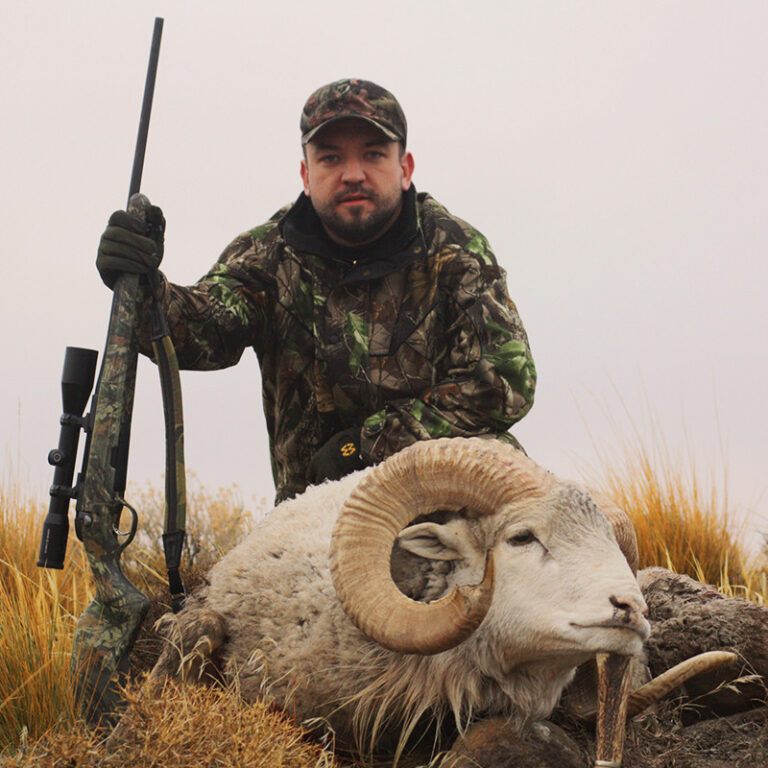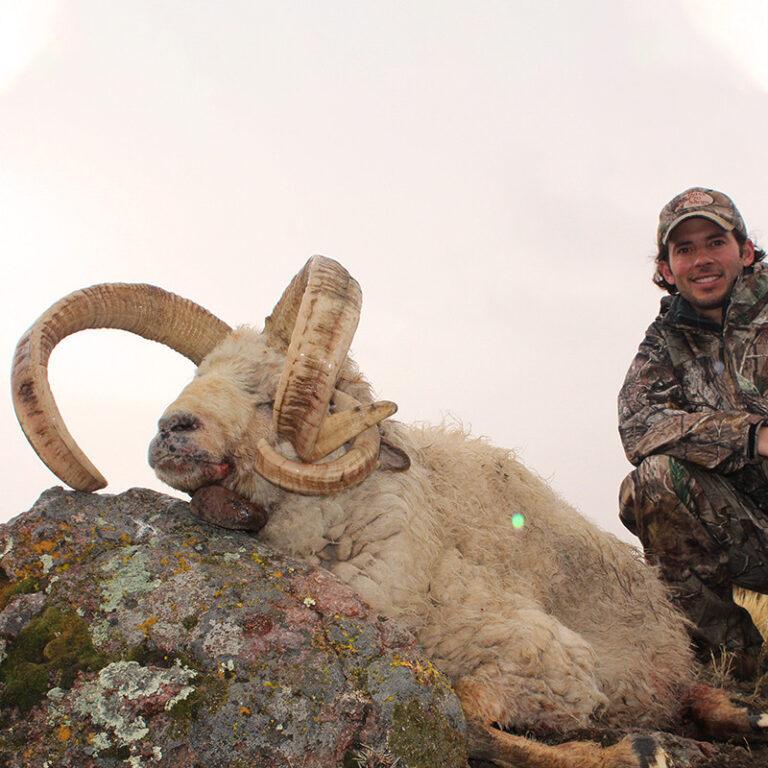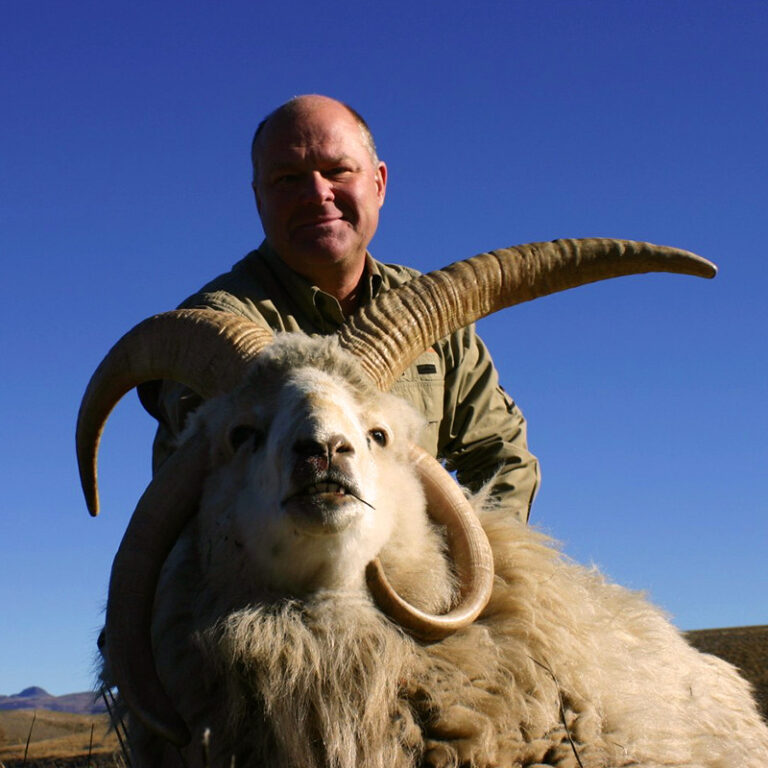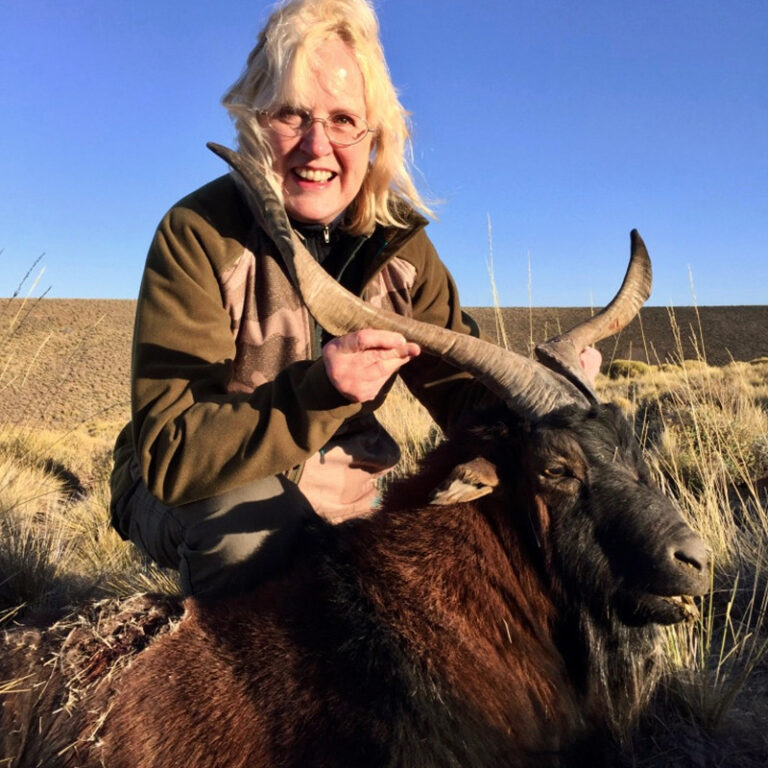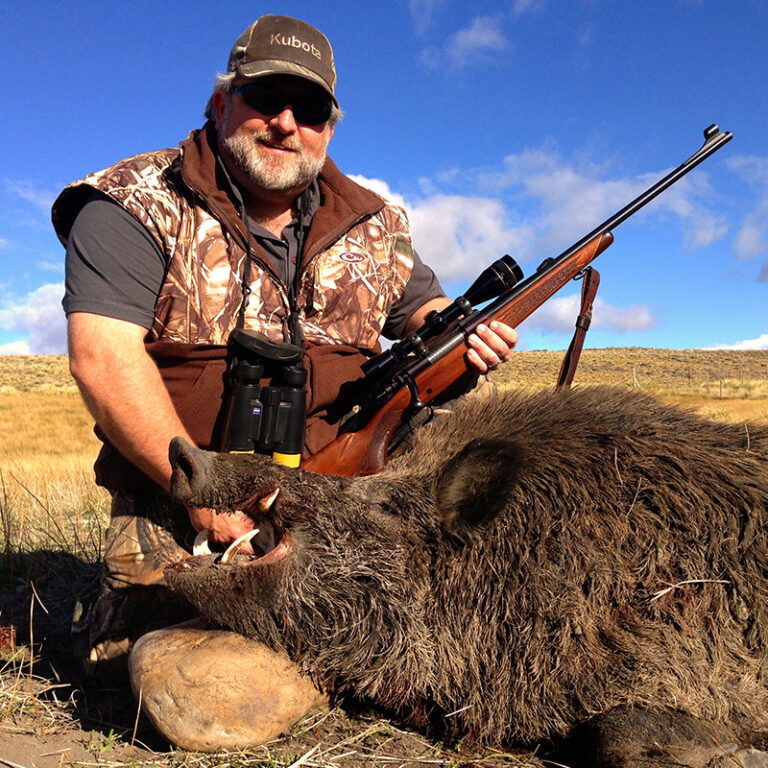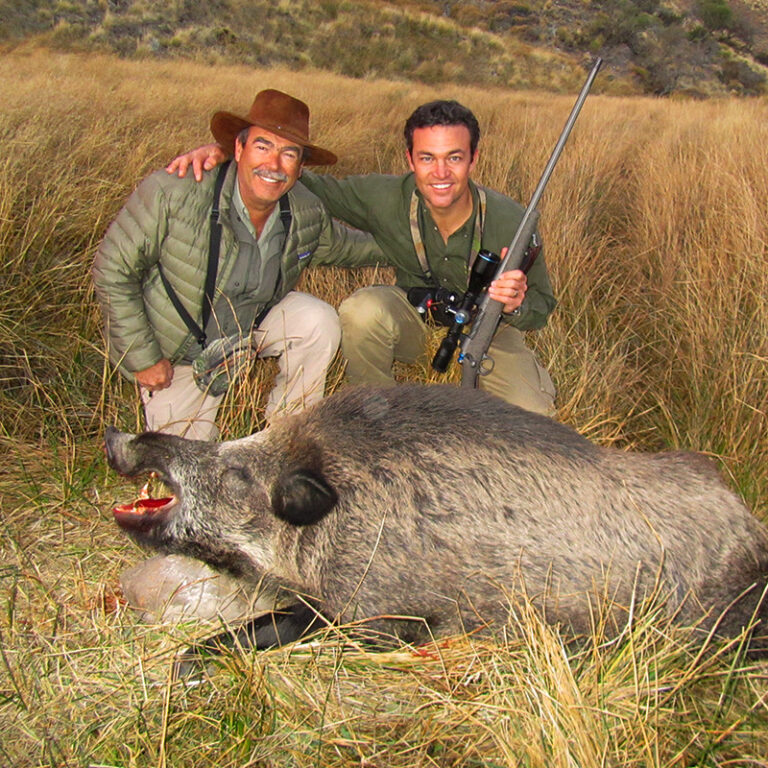How we do it
Imagine being able to set up your camp or building your hunting cabin right in the middle of the best hunting area you’ve seen in your life. Algar set its lodges right where the action is. Your only complain may be hearing too much roaring, or seeing too many animals, while you’re enjoying some of the world’s finest wines and eating in-house raised meats and vegetables.
Species
You will find more than 12 different species in our 85,000 acres private ranches, we really offer the very best fair chase and also free-range hunting.
Bow Hunting
We seldom use blinds since there are no water holes, wildlife trails or any concentration of game at specific points. Bow hunting at Algar is highly entertaining and chances of success in harvesting a red stag are very high.
Species
Red Stag
Highly related to North American elk, red deer were brought to Argentina by european settlers over a century ago. They have found a very suitable environment with ample food, cover and relatively mild weather. Testament to this is their constant range expansion. Male red deer are called stags and they weigh in at about 400-700lb, whereas females, called hinds, are much smaller at 200-300lb. Red deer rut occurs between March and May and their gestation period is about eight months.
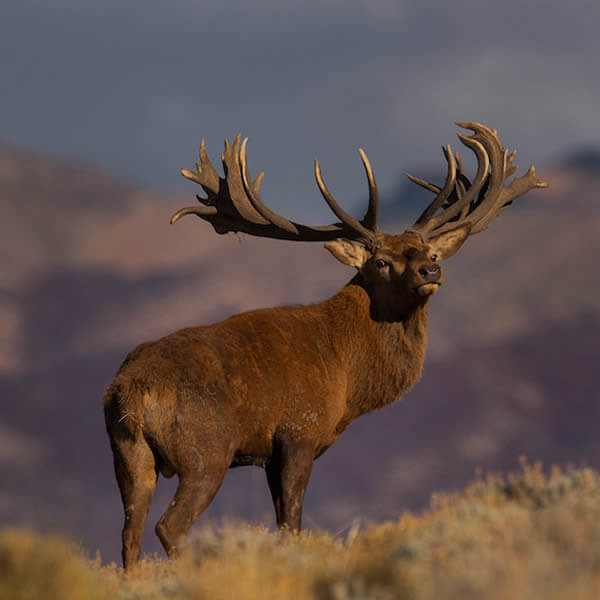
Red Stag
Highly related to North American elk, red deer were brought to Argentina by european settlers over a century ago. They have found a very suitable environment with ample food, cover and relatively mild weather. Testament to this is their constant range expansion. Male red deer are called stags and they weigh in at about 400-700lb, whereas females, called hinds, are much smaller at 200-300lb. Red deer rut occurs between March and May and their gestation period is about eight months.
FALLOW DEER
Much smaller than the red deer and with palmated antlers. They are truly an amazement to watch during their rut as they are vicious fighters. Their rutting sound resembles a low frequency grunt and it starts about 15 days later than the red deer. They come in a variety of colors ranging from totally white to totally black, most commonly spotted.
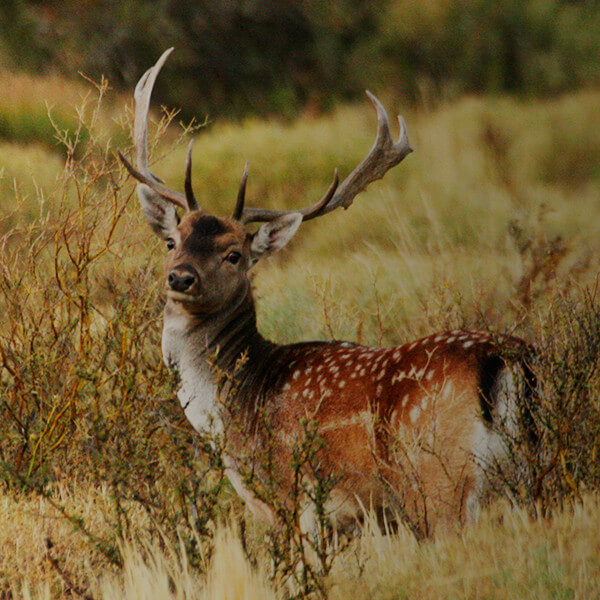
FALLOW DEER
Much smaller than the red deer and with palmated antlers. They are truly an amazement to watch during their rut as they are vicious fighters. Their rutting sound resembles a low frequency grunt and it starts about 15 days later than the red deer. They come in a variety of colors ranging from totally white to totally black, most commonly spotted.
PÈRE DAVID’S DEER
This animal warrants a whole section on its own due to its interesting natural history. Let us sum it up by saying that they were extinct in their native range (China), around 4000 is the current world population, most are found in zoos, and Algar is the only place in the world where they are present in a hunting environment, not a park or small enclosure. Very rare antlers, with split main beams and several smaller tines make this one of the rarest deer family trophies in the world. Père David’s Deer are unique to temperate deer species since they rut at the end of the spring.
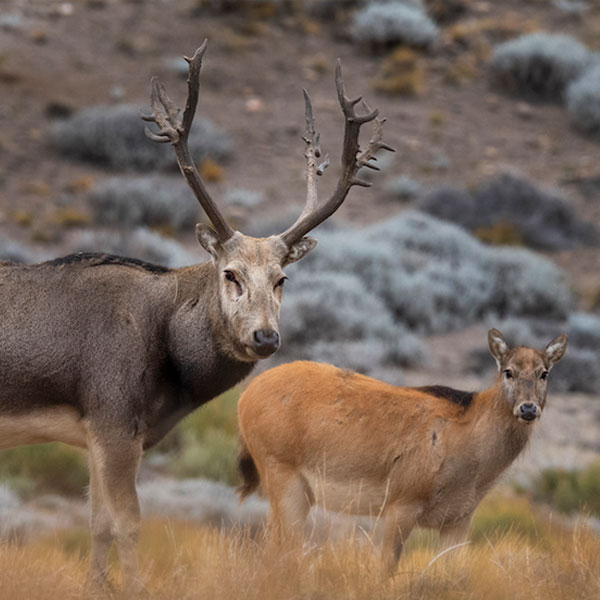
PÈRE DAVID’S DEER
This animal warrants a whole section on its own due to its interesting natural history. Let us sum it up by saying that they were extinct in their native range (China), around 4000 is the current world population, most are found in zoos, and Algar is the only place in the world where they are present in a hunting environment, not a park or small enclosure. Very rare antlers, with split main beams and several smaller tines make this one of the rarest deer family trophies in the world. Père David’s Deer are unique to temperate deer species since they rut at the end of the spring.
AXIS DEER
Native to tropical India, has found in most parts of Argentina abundance of grass and pleasant weather. A lot of fun to hunt since they tend to stay in thickets and treed areas. Not being a temperate species they don’t have a definite growing and rutting season. This means you can, at any point, find animals with velvet antlers, fully stripped, recent growth, etc.
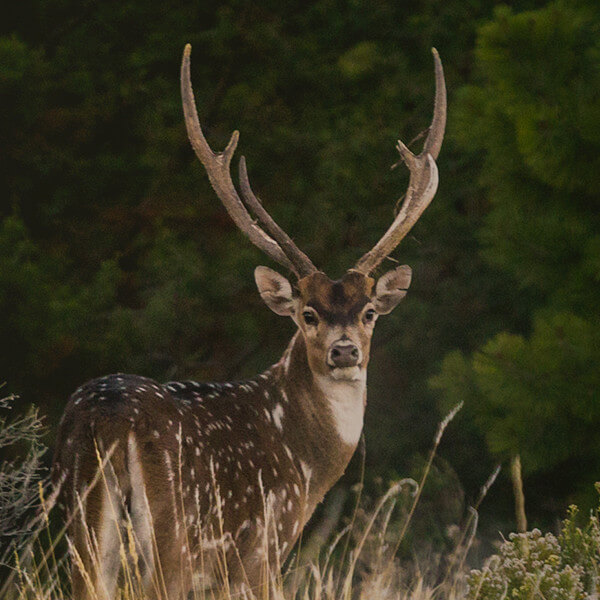
AXIS DEER
Native to tropical India, has found in most parts of Argentina abundance of grass and pleasant weather. A lot of fun to hunt since they tend to stay in thickets and treed areas. Not being a temperate species they don’t have a definite growing and rutting season. This means you can, at any point, find animals with velvet antlers, fully stripped, recent growth, etc.
EUROPEAN MOUFLON
We do not encourage cursing or foul language but we understand it when hunters are going after a mouflon. They make you walk, they make you shoot far, but the hard work results in one of the most fun hunts we offer. Native to several areas of Europe, mouflons are believed to be the primordial sheep, before sheep where selected for fleece. They are a rather small sized sheep weighing in at about 70lb.
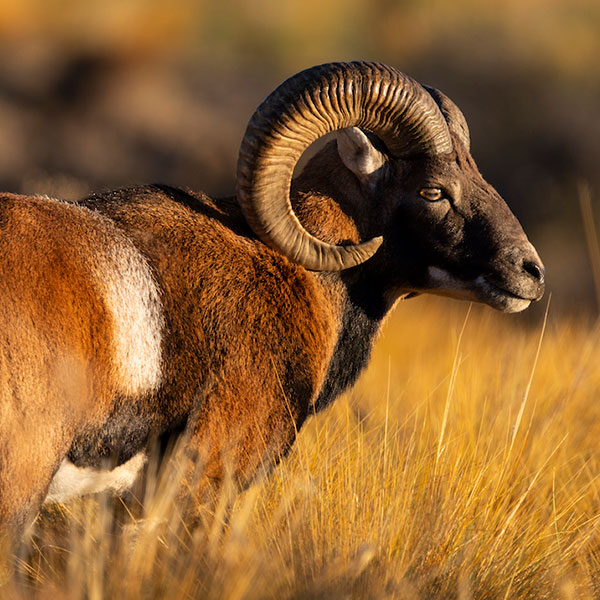
EUROPEAN MOUFLON
We do not encourage cursing or foul language but we understand it when hunters are going after a mouflon. They make you walk, they make you shoot far, but the hard work results in one of the most fun hunts we offer. Native to several areas of Europe, mouflons are believed to be the primordial sheep, before sheep where selected for fleece. They are a rather small sized sheep weighing in at about 70lb.
BLACKBUCK ANTELOPE
Also native to tropical india and sharing range with axis deer, blackbuck are very fast, skittish animals that like roaming in very large groups making this hunt a very exciting one.
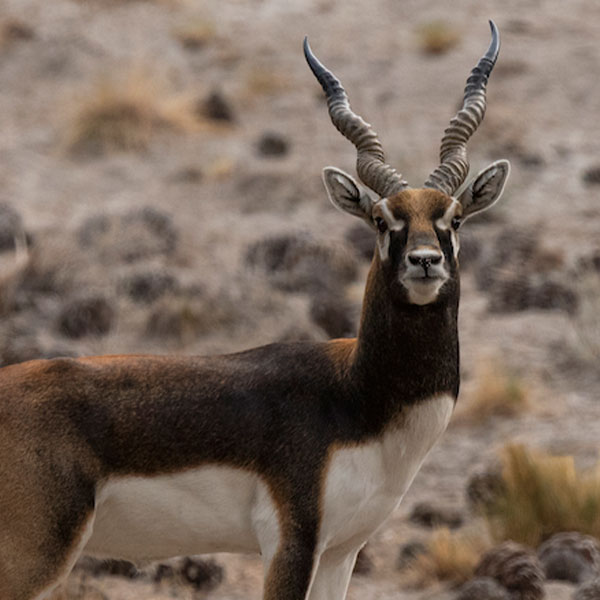
BLACKBUCK ANTELOPE
Also native to tropical india and sharing range with axis deer, blackbuck are very fast, skittish animals that like roaming in very large groups making this hunt a very exciting one.
PATAGONIAN DALL
The region Patagonia sported 115 million head of sheep in the 1930s. After several economic and weather related downfalls, a lot of this domestic stock was just released from private ranches. The introduction of mouflon in the 1950s started generating crossings that ended up in feral domestic / wild crosses that underwent their own modifications. We call it patagonian dall because of its resemblance with Dall sheep. Avid walkers and very skittish, these sheep are the perfect addition to your red stag hunt.
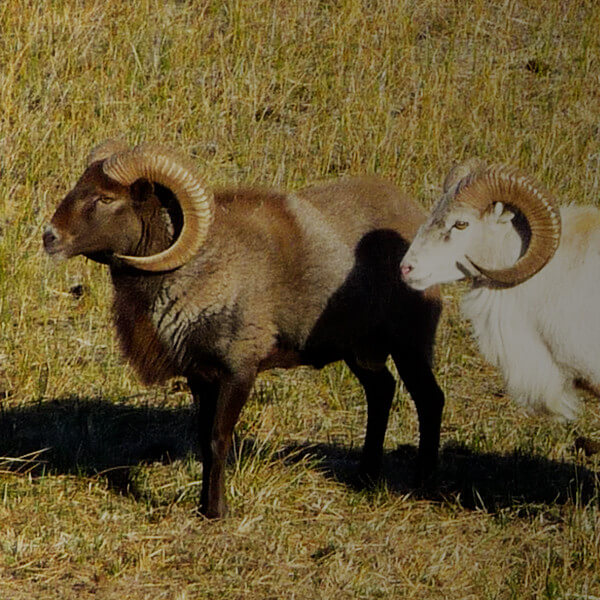
PATAGONIAN DALL
The region Patagonia sported 115 million head of sheep in the 1930s. After several economic and weather related downfalls, a lot of this domestic stock was just released from private ranches. The introduction of mouflon in the 1950s started generating crossings that ended up in feral domestic / wild crosses that underwent their own modifications. We call it patagonian dall because of its resemblance with Dall sheep. Avid walkers and very skittish, these sheep are the perfect addition to your red stag hunt.
PATAGONIAN RAM
In all likeliness less feral looking than the patagonian dall, sometimes with remnants of fleece and in varied colorings.

PATAGONIAN RAM
In all likeliness less feral looking than the patagonian dall, sometimes with remnants of fleece and in varied colorings.
MULTI-HORN SHEEP
Also known as Jacob’s ram. Rather heavy (120-180 lb) and with 4 or more horns typically 2 growing vertically and 2 smaller side horns growing along the jaw. Most commonly white colored but some brown or black ones can be found.
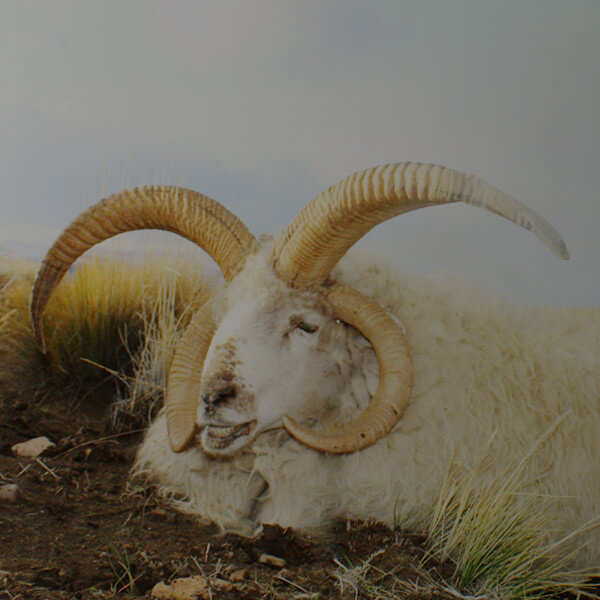
MULTI-HORN SHEEP
Also known as Jacob’s ram. Rather heavy (120-180 lb) and with 4 or more horns typically 2 growing vertically and 2 smaller side horns growing along the jaw. Most commonly white colored but some brown or black ones can be found.
WILD GOAT
Also a product of domestic goat escapees they’ve found a great environment to thrive and avoid recapture.
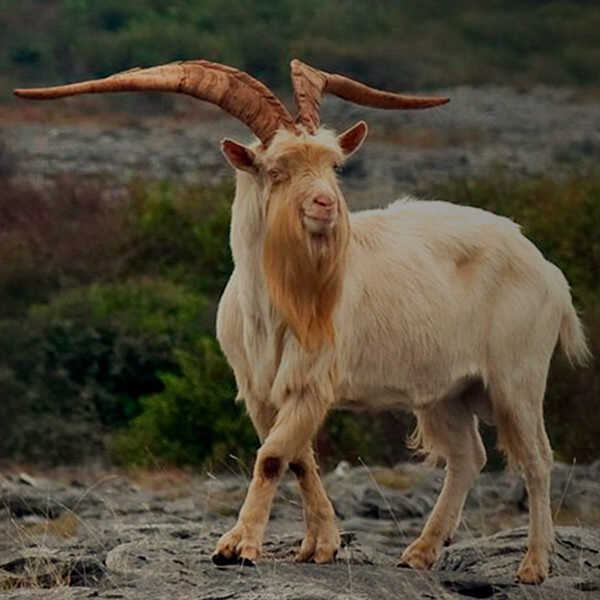
WILD GOAT
Also a product of domestic goat escapees they’ve found a great environment to thrive and avoid recapture.
JUAN FERNANDEZ GOAT
When spanish explorers wandered down to the southern hemisphere they left behind farm animals that they could go back to several years later and harvest as animal protein. Juan Fernández island, off the chilean coast was not visited back often enough and its terrain proved to be a perfect environment for these spanish goats to recess back to it original wild fenotype. Its north dwelling counterpart, the Balearean boc, has the same natural history and as it is better known we sometimes equate them. Hunters can attest to the difficulty of this hunt.
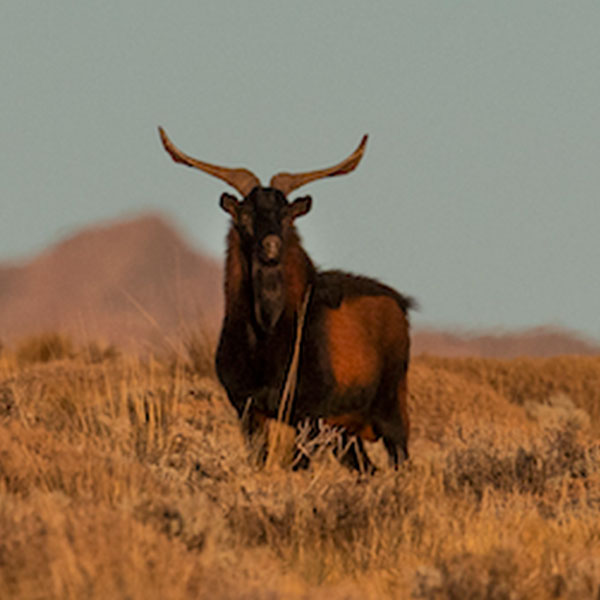
JUAN FERNANDEZ GOAT
When spanish explorers wandered down to the southern hemisphere they left behind farm animals that they could go back to several years later and harvest as animal protein. Juan Fernández island, off the chilean coast was not visited back often enough and its terrain proved to be a perfect environment for these spanish goats to recess back to it original wild fenotype. Its north dwelling counterpart, the Balearean boc, has the same natural history and as it is better known we sometimes equate them. Hunters can attest to the difficulty of this hunt.
EUROPEAN BOAR
Introduced from Europe around the same time as red deer, and as all porcine species, european boars have conquered almost every area they set their hoofs on. Our advantage in this regard is that being in a such a remote area with absence of domestic pigs, ours have remained pure and true to type. Sporting amazing 8” or more cutters, with weights of up to 300lb, our boar hunts are as fun as it gets.
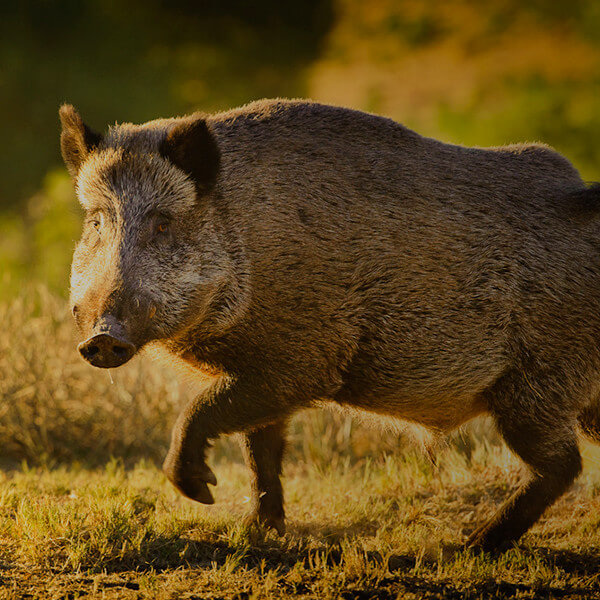
EUROPEAN BOAR
Introduced from Europe around the same time as red deer, and as all porcine species, european boars have conquered almost every area they set their hoofs on. Our advantage in this regard is that being in a such a remote area with absence of domestic pigs, ours have remained pure and true to type. Sporting amazing 8” or more cutters, with weights of up to 300lb, our boar hunts are as fun as it gets.
Water Buffalo
Also called Asian water buffalo or Indian buffalo. A large, heavily built, oxlike animal with stout legs, large, splayed hooves, a large head and a large, hairless muzzle. The ears are relatively small and lightly haired. The tail reaches to the hocks and ends in a small tuft. Coloration is normally black or gray with the lower legs a dirty white. The coat is moderately long, coarse and sparse, with the hairs directed forward from hindquarters to head. The horns (both sexes) are heavy at the base, triangular in section, flat on top with conspicuous wrinkles, and grow out from the sides of the head without forming a boss, in a variety of configurations.
There are no biological differences between the wild and domestic varieties. The water buffaloes introduced in South America are of the domestic type.
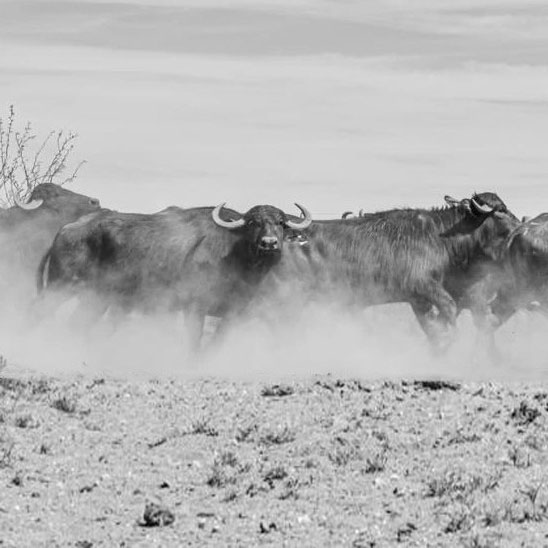
Water Buffalo
Also called Asian water buffalo or Indian buffalo. A large, heavily built, oxlike animal with stout legs, large, splayed hooves, a large head and a large, hairless muzzle. The ears are relatively small and lightly haired. The tail reaches to the hocks and ends in a small tuft. Coloration is normally black or gray with the lower legs a dirty white. The coat is moderately long, coarse and sparse, with the hairs directed forward from hindquarters to head. The horns (both sexes) are heavy at the base, triangular in section, flat on top with conspicuous wrinkles, and grow out from the sides of the head without forming a boss, in a variety of configurations.
There are no biological differences between the wild and domestic varieties. The water buffaloes introduced in South America are of the domestic type.
HOW WE DO IT
Imagine being able to set up your camp or building your hunting cabin right in the middle of the best hunting area you’ve seen in your life. Algar set its lodges right where the action is. Your only complain may be hearing too much roaring, or seeing too many animals, while you’re enjoying some of the world’s finest wines and eating in-house raised meats and vegetables.
Spot and stalk
Due to the very open nature of our terrain and the large size of the property, large tracts of ground need to be covered daily. Our extensive network of roads (+330mi) allows our guides to reach almost every part of the ranch on 4WD vehicles, however, final approach is always done on foot. Depending on the physical ability of the hunter, some walking is required to make good approaches to game. The usual daily distance hunters walk ranges from 1mi to 15mi. We move when the animals move and we bed when they bed. Early mornings and evenings are the best time to find game around the ranch.
APPROPRIATE CALIBERS
Almost any projectile above 50gr can take down a mature red deer, however, we encourage our hunters to use heavier bullets ranging from 130-180gr. Shots here are longer than usual (180yds) and some extra power at impact is always beneficial. Most used and effective calibers are: .270WIN, 7mm REM MAG, .308 WIN, .30-06 SPRG, .300 WIN MAG, 6.5 Creedmoor. For Water Buffalo ,300 WIN MAG or bigger. Necked down versions, short mags, and newer high BC calibers are also great for this type of hunting. Keep in mind that you will be scouting for game ranging from 75lb (Blackbuck) up to 1200lb (Water Buffalo) so it is important to find a proper gun that is, ideally, a good suit for all of them. The game sheep found at the ranch usually require longer than usual shots so flatter shooting rounds do come in handy.
FREE RANGE
We’ve managed our property for almost 30 years with one goal in mind: to have the best truly free range stags in the world. It has taken and still takes a lot of effort and dedication, not only from our staff but also from our hunters. You will have to pass on truly outstanding stags that are too young, you will have to help us by culling out the undesirable ones; but you will get a trophy of a lifetime. At the time of this writing, we can almost guarantee a gold medal red stag and you will certainly see upper gold and some TOP 5 animals.
ESTATE
Our estate area is 30,000 acres. Animals are born there, they get preyed upon there, they get exposed to weather, diseases, drought, etc. It is not a canned, bought and sold operation with farm raised animals. 30,000 acres is a lot of ground to cover to find your trophy, luckily you have us to guide you.
Bow Hunting
We seldom use blinds since there are no water holes, wildlife trails or any concentration of game at specific points. Bow hunting at Algar is highly entertaining and chances of success in harvesting a red stag are very high.
Regarding shooting distances, hunters may expect to shoot from 30 to 70 yards. However, for those who have never done spot and stalk or are used to tree stands / ground blinds, we have the following recommendations:
1 / You need to be a proficient shooter at 50yds.
2 / You need to be able to compensate for sidewind when shooting.
3 / You need to be able to both shoot fast and remain pulled for a long time while waiting for shot opportunity.
4 / You may need to shoot from a low / uncomfortable position such as kneeling or sitting.
5 / You need to be able to lay very low and crawl.
Chances, archery method per species (chance is defined as the probability of having 1 trophy animal or more at bow range):
- Red Stag: 100%
- Axis Deer: 50%
- Sheep: 50%
- Fallow Buck: 100%
- Blackbuck Antelope: 10%
- Goats: 50%
- Père David’s Deer: 85%
- Mouflon: 50%
- European Boar: 20%
Wingshooting
Hunting Season
All year round (DOVES) · May 1 St – August 31 St (MIXED BAG)
Although Algar Safaris is very well known as a big game hunting company, we have extended our hunting offer including wingshooting, which is very easy to combine with the finest big game hunting.
It takes place in Gualeguay, Entre Rios province, only 120 miles north from Buenos Aires. The very well maintained Spanish colonial “Estancia” was built in the golden era (1920s) and it features 8 master bedrooms. It’s strategically located, as this region provides the perfect environment for large quantities of ducks and perdiz. As the lodge is situated on the coast of Gualeguay river, between the marshes and the high fields that are mostly used for crops, millions of doves can be found.
We run two programs: “high volume dove shooting” and “mixed bag shooting” (Dove, perdiz & duck hunting). Hunters will experience the best dove shooting ever, or the world-famous mixed bag: great duck hunting early in the morning, followed by a fantastic perdiz hunt with dogs and the possibility to shoot as many doves as they want in the afternoon or just shooting doves all day long. This unique opportunity to experience three different types of bird hunts at the same place and on the same day; every day, is fantastic. Contact us for additional information.


